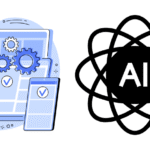
How to reduce your startups burn rate with cross-platform development—unlock the secrets to building efficient, cost-effective apps!
First Step: Understanding Burn Rate and Cross-Platform Development
Key Takeaway: Comprehending burn rate and cross-platform development is crucial for startup success.
To reduce a startup’s burn rate—the rate at which it spends money—efficiently, one must first understand what it means. In the business world, burn rate signifies the amount of cash consumed monthly, which affects a company’s runway (i.e., the time it has before running out of funds).
On the other hand, cross-platform development refers to creating software or applications that run seamlessly on multiple platforms, such as iOS, Android, and Windows. It’s a cost-effective approach, as it requires only one codebase, which reduces development time and resources.
Exemplify: Picture a startup like a car traveling across the country. Its burn rate is the rate at which it consumes fuel, while cross-platform development is the fuel-efficient engine that uses less fuel to reach the same destination.
Pro tip: To make informed decisions, track and analyze your burn rate regularly.
Second Step: Adopting Cross-Platform Development Tools
Key Takeaway: Choose the right tools to optimize cross-platform development and reduce your burn rate.
A variety of cross-platform development tools exist in the market. These tools allow developers to create apps that function smoothly on multiple operating systems. Popular choices include React Native, Xamarin, and Flutter.
Pros: Using cross-platform development tools can:
- Save time and resources
- Streamline your team’s workflow
- Increase the app’s reach
Cons: However, cross-platform development may:
- Lead to a decrease in native-like performance
- Present limitations in accessing native APIs
Exemplify: Consider React Native, a popular framework used by Facebook, Instagram, and Airbnb. It enables developers to create high-quality apps using a single codebase for both iOS and Android, saving time and money.
Pro tip: Assess your project’s requirements and choose a suitable cross-platform development tool that aligns with your startup’s goals.
Third Step: Efficient Resource Allocation
Key Takeaway: Allocate resources wisely to minimize expenses and reduce burn rate.
Resource allocation plays a significant role in managing your burn rate. Proper allocation involves assigning the right amount of resources (human, financial, or technical) to each project or task to ensure efficiency.
Exemplify: Imagine a restaurant with a limited number of chefs. Proper resource allocation entails assigning chefs to specific dishes, ensuring that all orders are completed promptly and accurately.
Pro tip: Create a detailed plan outlining your startup’s resource allocation to avoid overextending or underutilizing resources.
Fourth Step: Streamlining the Development Process
Key Takeaway: A streamlined development process results in cost and time savings.
Streamlining the development process involves identifying and eliminating bottlenecks, redundancies, and inefficiencies. By doing so, your startup can achieve a faster time-to-market and reduce development costs.
Exemplify: A well-organized assembly line in a factory is an example of a streamlined process. Each worker is assigned a specific task, and the product moves along the line smoothly, avoiding delays or errors.
Pro tip: Regularly review and adjust your development process to ensure that it remains efficient and effective.
Fifth Step: Leveraging Outsourcing and Remote Teams
Key Takeaway: Outsourcing and remote teams can lead to cost savings and greater flexibility.
Outsourcing tasks or hiring remote teams can provide cost savings and access to a larger talent pool. This approach allows your startup to maintain a lean in-house team while tapping into specialized expertise when needed.
Exemplify:** A startup might outsource certain tasks, such as graphic design or content creation, to skilled freelancers, reducing the need for a full-time, in-house team.
Pros: Outsourcing and remote teams offer benefits like:
- Lower operational costs
- Access to a global talent pool
- Increased flexibility
Cons: Potential downsides include:
- Communication challenges
- Time zone differences
- Reduced control over work quality
Pro tip: To succeed with outsourcing and remote teams, establish clear communication channels and expectations from the start.
Sixth Step: Continuous Learning and Adaptation
Key Takeaway: Embrace continuous learning and adaptation to stay competitive and manage your burn rate.
In the ever-evolving tech landscape, it’s crucial to continuously learn and adapt. By staying up-to-date on the latest technologies and best practices, your startup can make informed decisions to optimize development processes, reduce costs, and stay ahead of the competition.
Exemplify: A startup that embraces continuous learning may attend industry conferences, invest in employee training, or experiment with new technologies to remain competitive.
Pro tip: Encourage a culture of learning within your startup, providing opportunities for team members to grow and develop their skills.
7 Ninja Tricks on how to reduce your startups burn rate with cross-platform development
Trick 1: Embrace Low-Code/No-Code Platforms
Key Takeaway: Low-code/no-code platforms can speed up development and reduce costs.
Low-code/no-code platforms enable rapid app development with minimal coding, making it easier to create applications while saving time and resources. By embracing these platforms, startups can effectively reduce their burn rate.
Pro tip: Research and choose a low-code/no-code platform that aligns with your startup’s specific needs.
Trick 2: Optimize Developer Onboarding
Key Takeaway: Efficient onboarding leads to faster productivity and lower costs.
A well-structured developer onboarding process can help new team members become productive more quickly, reducing costs associated with delays or miscommunications. Make sure your onboarding process is comprehensive and easy to follow.
Pro tip: Create a detailed onboarding guide, including resources and documentation, to accelerate the learning process for new developers.
Trick 3: Implement Agile Methodologies
Key Takeaway: Agile methodologies promote adaptability and efficiency.
Agile methodologies emphasize collaboration, flexibility, and continuous improvement. By adopting these principles, your startup can improve development processes, reduce waste, and manage your burn rate more effectively.
Pro tip: Train your team in agile practices and establish a culture that values adaptability and innovation.
Trick 4: Use Open Source Libraries and Components
Key Takeaway: Open source libraries and components can save development time and costs.
Utilizing open source libraries and components allows your startup to build upon existing, proven solutions, reducing the time and resources needed for development. By leveraging these resources, you can effectively lower your burn rate.
Pro tip: Research and choose open source libraries that are reliable, well-maintained, and relevant to your project.
Trick 5: Implement Performance Monitoring and Analytics
Key Takeaway: Monitoring and analytics help identify areas for improvement and cost reduction.
By implementing performance monitoring and analytics, your startup can gain valuable insights into your app’s performance, user behavior, and potential bottlenecks. This information can help you optimize your app, reduce inefficiencies, and manage your burn rate.
Pro tip: Choose an analytics tool that provides detailed insights and supports your app’s platform(s).
Trick 6: Encourage Collaboration and Knowledge Sharing
Key Takeaway: Collaboration and knowledge sharing lead to greater efficiency and innovation.
Fostering a culture that values collaboration and knowledge sharing can help your team learn from one another, discover new solutions, and reduce development time. This, in turn, can lead to reduced burn rate and more efficient processes.
Pro tip: Implement tools and practices that facilitate collaboration, such as team chats, project management software, and regular meetings.
Trick 7: Test-Driven Development
Key Takeaway: Test-driven development ensures quality and reduces long-term costs.
Test-driven development (TDD) is a development approach in which developers write tests before writing the code itself. This method promotes better code quality, reduces bugs, and can lower long-term costs associated with fixing issues.
Pro tip: Train your team in TDD best practices and implement it as a standard part of your development process.
Conclusion on how to reduce your startups burn rate with cross-platform development
Implementing cross-platform development can greatly reduce your startup’s burn rate by streamlining processes, optimizing resource allocation, and leveraging the right tools.
Moreover, embracing outsourcing, remote teams, and continuous learning can further contribute to cost savings and increased efficiency.
Remember, the key lies in understanding your startup’s unique needs and adapting accordingly to stay competitive in today’s fast-paced tech landscape.
William is a highly accomplished technical author specializing in cross-platform app development. With a rich background in the tech industry, he has worked at prestigious companies like Uber and Facebook, where he honed his skills as an iOS developer since 2009. Throughout his career, William has been an advocate for leveraging frameworks like React Native and Xamarin to create innovative and efficient cross-platform mobile apps.
Having pursued a degree in Computer Science and Mathematics at Caltech, William is equipped with a strong educational foundation. Currently residing in LA with his two daughters, he finds solace in exploring the scenic hills through hiking. Passionate about knowledge sharing, William not only builds cutting-edge applications but also takes pleasure in teaching students how to develop their own cross-platform mobile apps. His expertise, combined with his dedication to empowering others, makes him an invaluable asset in the field of app development.







